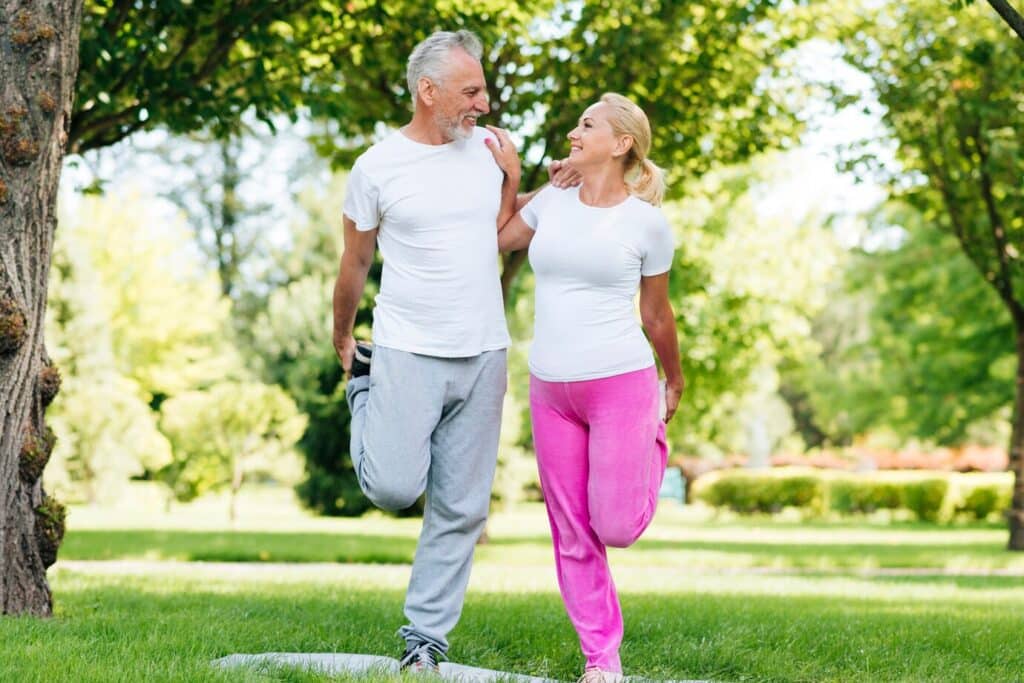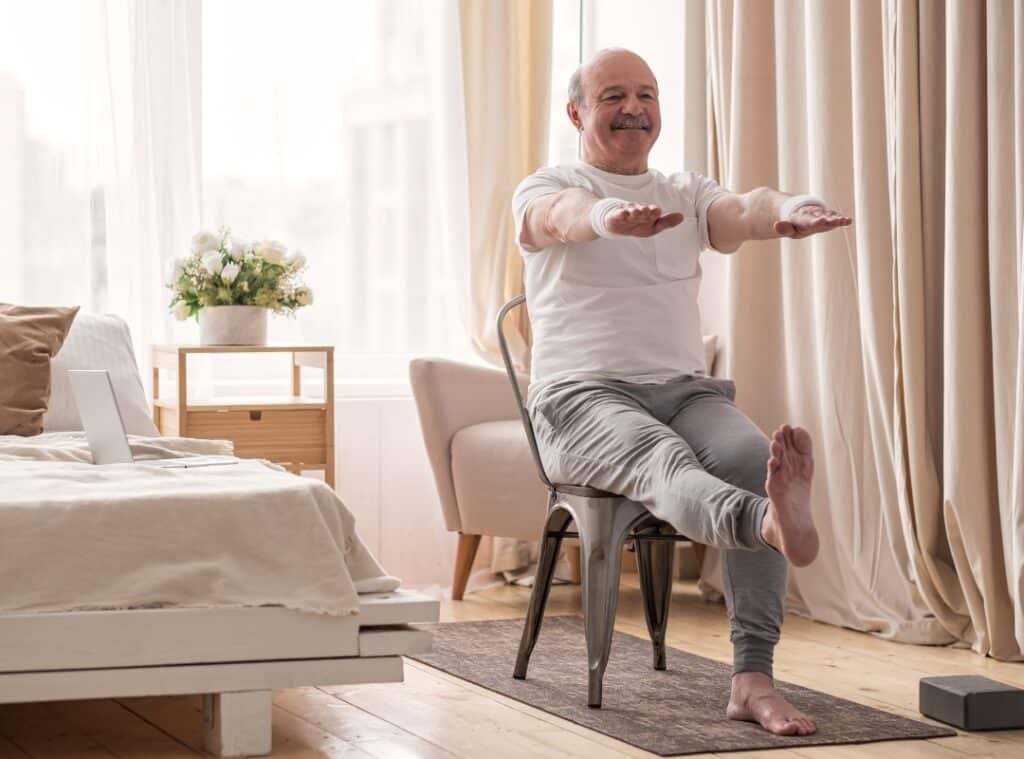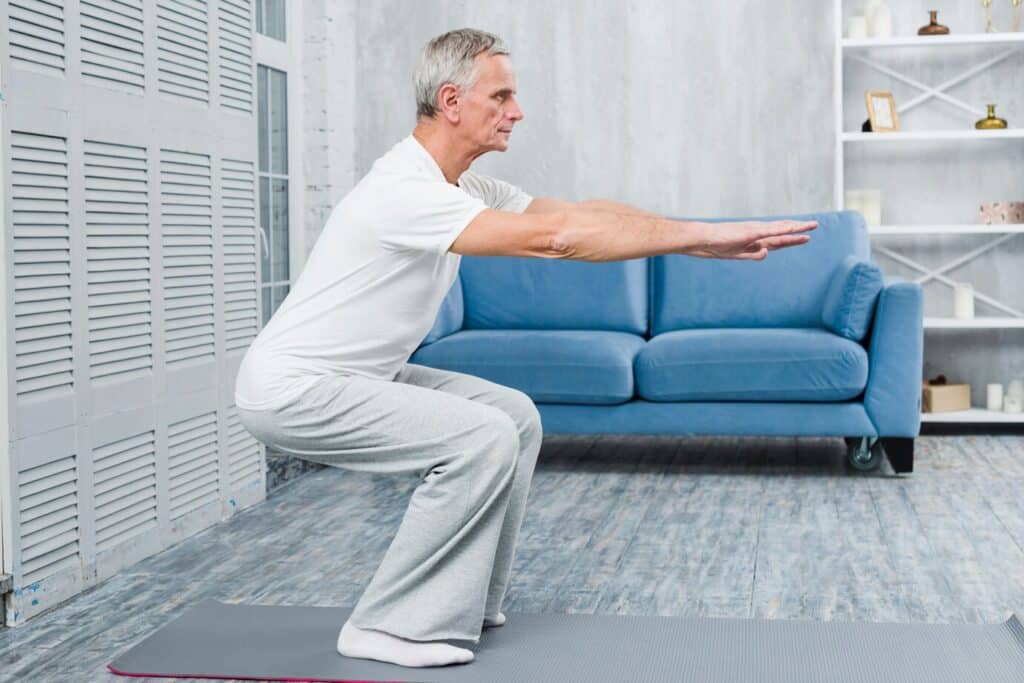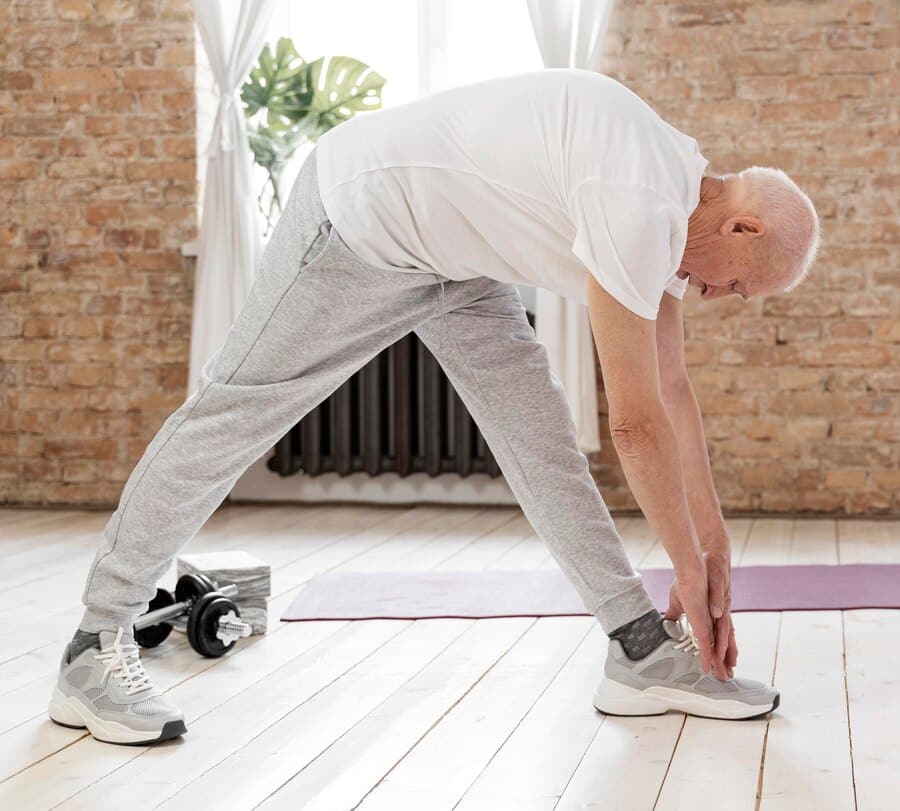Top Leg Exercises for Seniors at Home and Beyond
Staying active becomes increasingly important with age, especially when maintaining lower-body strength and mobility. Leg exercises for seniors improve balance and flexibility and enhance independence and quality of life. Whether you’re at home, recovering from an injury, or looking for gentle ways to stay fit, there are countless ways to support your legs.
This guide outlines simple, effective routines—including leg strengthening exercises for seniors while sitting and even leg strengthening exercises for seniors in bed—that are safe and adaptable for various needs. And with resources like leg exercises for seniors YouTube videos and illustrated guides, it’s easier than ever to find the right routine for you.
Warm-Up and Safety Precautions
Before starting any routine, proper warm-up and safety measures are crucial. Stretching your calves, quadriceps, and hamstrings helps prevent injury and enhances flexibility. Spend 5–10 minutes warming up, focusing on posture and breathing. For example, ankle circles and toe taps are excellent pre-exercise motions that activate circulation and joint mobility.
A stable chair, countertop, or wall can be used for support if balance is a concern. Listening to your body is essential—if a movement causes pain, adjust or pause. Including balance exercises in your warm-up can further reduce fall risk while preparing your legs for strengthening routines.
Seated Leg Exercises for Stability and Strength
Leg exercises for seniors at home can easily begin in a seated position. This format supports your body while allowing effective muscle engagement. These leg strengthening exercises for seniors while sitting are a great entry point:
| Exercise | Description |
| Chair Leg Raises | Lift one leg straight out, hold for five seconds, then lower. |
| Seated Knee Extensions | Extend each leg slowly, focusing on controlled movements. |
| Toe Taps | Gently tap toes on the floor to increase foot mobility. |
| Ankle Rotations | Circle your feet in both directions to improve flexibility. |
| Seated Marching | Alternate lifting knees toward the chest to simulate marching. |
These routines are not only practical but also easily modifiable. For visual learners, search for leg exercises for seniors with pictures or check leg exercises for seniors on YouTube for guided instructions. You’ll discover a variety of styles, including beginner-friendly sequences.
Learn more about seated exercise routines in this helpful guide.

Standing and Dynamic Leg Movements
Standing exercises can further develop strength and coordination once you’ve built confidence through seated routines. Try these options to enhance muscle tone and balance:
Calf Raises – Stand with feet hip-width apart and slowly rise onto your toes, then lower.
Wall Sits – Slide down a wall until your knees form a 90-degree angle. Hold for as long as comfortable.
Side Leg Raises – Stand behind a chair and lift each leg outward to strengthen hip stabilizers.
Leg Circles – Slowly move one leg in small circles while standing, using support as needed.
Step-Ups – Step onto a low platform or stair, then step down slowly, alternating legs.
These activities mimic everyday motions and can boost your confidence in walking or climbing stairs. Those with joint concerns might explore leg exercises for seniors with bad knees, such as gentle leg lifts or seated leg presses using resistance bands.
Understanding the costs of assisted living can help you plan for long-term wellness support as you prepare for future lifestyle transitions.
Gentle Leg Workouts from Bed
For those with mobility limitations, leg strengthening exercises for seniors in bed offer accessible ways to stay active. Try these lying-down movements to maintain muscle tone:
- Heel Slides – Slide one heel toward your glutes, then extend back.
- Leg Abductions – Slide a straight leg out to the side and return to center.
- Ankle Pumps – Point and flex your toes repeatedly to stimulate circulation.
These are excellent for post-surgery recovery or low-energy days. As with any exercise, focus on control and avoid quick or jerky movements. Bed-based workouts are ideal for maintaining consistency while honoring physical limitations.
Creating a Sustainable Weekly Routine
To benefit fully from these leg exercises for seniors, aim for 3–4 sessions per week. Rest and variation are equally important—alternate between seated, standing, and bed routines depending on your energy levels.
Consistency is key. Use resistance bands for added challenge, or turn to leg exercises for seniors YouTube playlists to follow along with a guided workout. Incorporate light stretching afterward to ease muscle tension and improve flexibility.
Adapting exercises to your specific needs—whether through leg exercises for seniors with bad knees or using a chair for support—ensures safety and long-term results. To support your broader fitness goals, consider exploring mobility-enhancing routines as part of your wellness journey.
Social Wellness and Group Fitness
Combining physical activity with social connection has amplified benefits. Group classes provide accountability, motivation, and a sense of belonging. Many communities offer group sessions featuring leg exercises for seniors at home or in shared spaces.
At Westmont Living, these classes are guided by trained professionals who focus on safety, progress, and enjoyment. Whether it’s a walking club, seated yoga, or strength-building circle, staying socially active fosters physical and mental wellness.
Participating in a community that supports your goals creates structure and joy in your daily habits. Read more about the benefits of community wellness programs available in senior living settings.
Strengthening Your Future: Get Started Today
When it comes to maintaining mobility and independence, it’s never too late to start. Adding leg exercises for seniors to your weekly routine can result in measurable posture, balance, and confidence improvements.
Take Mary, a resident who began leg strengthening exercises for seniors while sitting. Over a few weeks, she noticed less knee pain and improved stamina, enabling her to go on neighborhood walks easily.
Explore routines like leg strengthening exercises for seniors in bed or seated workouts on leg exercises for seniors on YouTube, and discover a style that meets your needs. Using visual guides like leg exercises for seniors with pictures can also make the process intuitive and inspiring.
At Westmont Living, we encourage you to embrace these exercises and discover how movement can enhance your independence, spirit, and day-to-day life.
Learn more about our wellness-focused communities or contact us directly to speak with a member of our team: Westmont Living Contact.
Dive into the vibrant life our Westmont communities have to offer.Find Where You Belong
Frequently Asked Questions
What is the best exercise for seniors to strengthen their legs?
The sit-to-stand exercise is one of the best exercises for seniors to strengthen their legs. It mimics the motion of getting up from a chair, helping improve leg strength, balance, and daily mobility. This low-impact movement targets the quadriceps, hamstrings, and glutes. It’s simple, safe, and can be done at home using a sturdy chair.
How can I build leg muscle after 70?
Building leg muscle after 70 is very possible with consistent strength training and proper form. Focus on bodyweight exercises like squats, leg lifts, and step-ups, gradually adding light resistance bands or dumbbells. Getting enough protein and rest to support muscle repair is also important. Always consult a doctor or physical therapist before starting a new routine.
What is the single best exercise for legs?
The squat is widely considered the single best exercise for legs. It targets major muscle groups, including the thighs, hips, and glutes, while also improving balance and flexibility. Squats can be modified to suit various fitness levels, including chair squats for beginners. Doing them regularly helps maintain strength and independence in daily tasks.
What is the best leg exerciser for seniors?
The best leg exerciser for seniors is often a pedal or under-desk cycle machine. These devices are easy to use while seated and help improve circulation, joint mobility, and muscle tone. They’re beneficial for seniors with limited mobility or balance concerns. Look for models with adjustable resistance to match different fitness levels.









